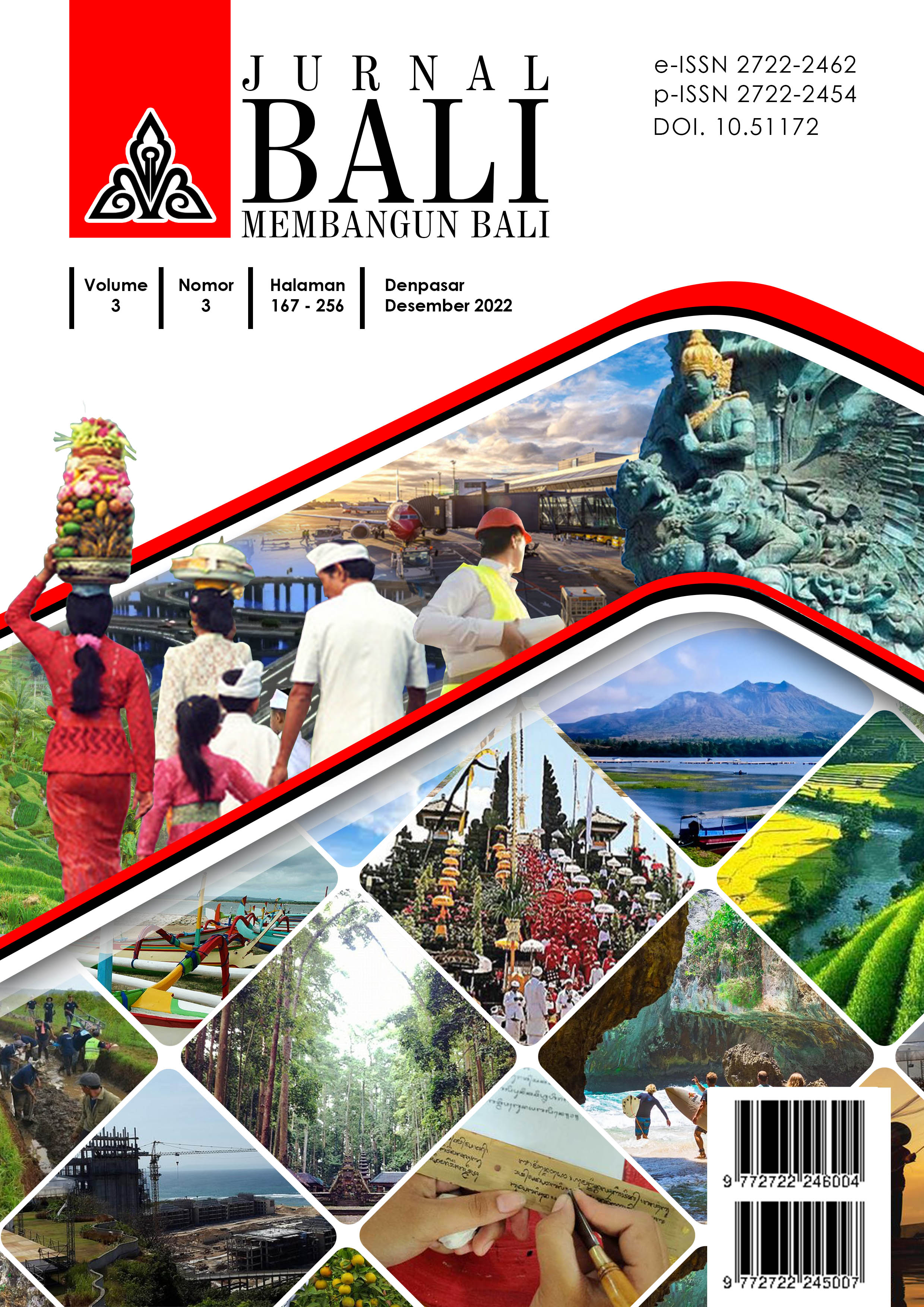Main Article Content
Abstract
Purpose: This study is to determine the current development of sacred Lembu Putih (White Cow) tourist attraction as well as the strategy for developing such a tourist attraction as a sustainable tourism.
Research methods: The data collection used is participatory observation, structured interviews, documentary study, and questionnaires. The analysis technique used is the mix methods.
Results and discussion: Internal factors that influence the development of white bull tourist attraction as Sustainable Tourism are attractions, facilities, accessibility, human resources and prices, while external factors are political factors, economic factors, social factors, technological factors.
Implication: A priority tourist attraction development strategy is obtained, namely expanding networks, promoting, and maintaining cooperation with the government and the private sector to support improving the quality of facilities and infrastructure.
Keywords
Article Details

This work is licensed under a Creative Commons Attribution-NonCommercial-ShareAlike 4.0 International License.
Authors who publish with this journal agree to the following terms:
Authors retain copyright and grant the journal right of first publication with the work simultaneously licensed under a Attribution-NonCommercial-ShareAlike 4.0 International (CC BY-NC-SA 4.0) that allows others to share the work with an acknowledgement of the work's authorship and initial publication in this journal.
Authors are able to enter into separate, additional contractual arrangements for the non-exclusive distribution of the journal's published version of the work (e.g., post it to an institutional repository or publish it in a book), with an acknowledgement of its initial publication in this journal.
Authors are permitted and encouraged to post their work online (e.g., in institutional repositories or on their website) prior to and during the submission process, as it can lead to productive exchanges, as well as earlier and greater citation of published work (See The Effect of Open Access).
References
- Andriani, Merian, D., & Sunarta, I. N. (2015). Pengelolaan Desa Wisata Belimbing menuju Pariwisata Berkelanjutan Kecamatan Pupuan, Kabupaten Tabanan, Bali. Vol. 3 No.1.
- Bayu, R. (2015). Pariwisata Bali dan Global (Bali and Global Tourism). http://madebayu.blogspot.com/2015/03/obyek-wisata-lembu-putih.html
- BPS. (2019). Banyaknya Wisatawan Mancanegara yang Datang Langsung ke Bali Menurut Kebangsaan, 2014-2019. https://bali.bps.go.id/statictable/2018/02/09/27/jumlah-wisatawan-mancanegara-yang-datang-langsung-ke-bali-menurut-kebangsaan-2014-2018.html).
- Cabe, Scott M. (2008). Marketing Communication in Tourism and Hospitality. https://www.amazon.co.uk/Marketing-Communications-Tourism-Hospitality-Strategies/dp/0750682779.
- Farsari, I. (2012). The Development of a Conceptual Model to Support Sustainable Tourism Policy in North Mediterranean Destinations. https://doi.org/http://dx.doi.org/10.1080/19368623.2012.624298.
- Partama, M. Gaga, (2015). Lembu Putih Taro Maskot Kabupaten Gianyar. Udayana University Press.
- Hardiantono, K. (1996). Perencanaan Pengembangan Destinasi Pariwisata. UI Press.
- Kernel, P. (2005). Creating and implementing a model for sustainable development in tourism enterprises.
- Madriana, I. M. (2012). Sekilas tentang keberadaan duwe Lembu Putih. https://docplayer.info/50527451-Potensi-dan-permasalahan-pengembangan-sapi-taro-sapi-bali-putih-di-desa-taro-kabupaten-gianyar-bali.html.
- Mahadiansar, & Aspariyana. (2020). PEST Analysis Model dalam Pengembangan Potensi Wisata Pulau Benan, Kabupaten Lingga, Kepulauan Riau. 01, 15–25.
- Mudana, I G., Ernawati, N.M., & Voda, M. (2021). Analysis of the Evolving Cultural Tourism Implementation in Bali Indonesia, Multicultural Education (ISSN: 1068-3844), Vol, 7 No 6 (2021), p. 608-619, http://ijdri.com/me, https://doi.org/10.5281/zenodo.5035637. Scimago Link: www.scimagojr.com/journalsearch.php?q=145057&tip=sid&clean=0.
- Pendit, N. S. (1990). Imu Pariwisata Sebuah Pengantar Perdana. T.Pradnya Paramita.
- Prananda, I. W. Y., Paturusi, S. A., & Sudiarta, I. N. (2018). Penerapan Pariwisata Berkelanjutan di Ceking Tegallalang, Gianyar. 4, 15.
- Prastowo, A. (2016). Metode Penelitian Kualitatif dalam Perspektif Rancangan Penelitian. AR-RUZZ MEDIA.
- Rahim, I. F. (2012). Pedoman Pokdarwis. Direktur Jenderal Pengembangan Destinasi PariwisataKementerian Pariwisata dan Ekonomi Kreatif.
- Sarwono Jonathan. (2011). Mixed Methods Cara Menggabung Riset Kuantitatif dan Riset Kulitatif secara Benar. PT. Elex Media Komputindo.
- Sudiarta, N. I., Suardana, W. I., & Ariana, N. (2014). Persaingan Daya Tarik Pariwisata Bali Suatu Kajian Konseptual dan Empiris. Perhotelan Dan Pariwisata, 4(1), 1–13.
- Sugiyono. (2011). Metode Penelitian Kombinasi (Mixed Methods). CV. Alfabeta.
- Sunarta, N., & Arida, N. S. (2017). Pariwisata Berkelanjutan. Cakra Press. https://simdos.unud.ac.id/uploads/file_pendidikan_1_dir/81eee6c1d3a49690e16b3be3dfb9855f.pdf.

